Themed collection Carbon dioxide utilisation

Concluding remarks: Carbon dioxide utilization: where are we now?… and where are we going?
The 12 principles of CO2 chemistry published 2015 are brought into context with the current perspective. “What has been changed since then?” and “is our enthusiasm still enough?” are just a few questions that are to be answered in the following.

Faraday Discuss., 2021,230, 413-426
https://doi.org/10.1039/D1FD00038A
Spiers Memorial Lecture: CO2 utilization: why, why now, and how?
This overview on carbon dioxide utilization (CDU) provides a framework for the opportunities, boundary conditions, potential pitfalls, and critical needs to advance technologies rapidly to deploy CDU as a mainstream climate-relevant solution.

Faraday Discuss., 2021,230, 9-29
https://doi.org/10.1039/D1FD00029B
CO2 utilization in built environment via the PCO2 swing carbonation of alkaline solid wastes with different mineralogy
A circular economy in the built environment via carbon mineralization of alkaline industrial wastes and silicate minerals via PCO2 swing or via pH swing, employing acid and base generated from electrolysis using renewable energy.
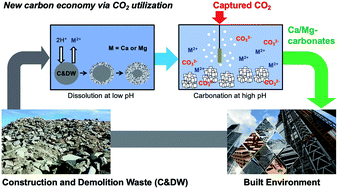
Faraday Discuss., 2021,230, 187-212
https://doi.org/10.1039/D1FD00022E
Developing a triple helix approach for CO2 utilisation assessment
We propose a new screening-type social impact assessment for developing CDU technologies; the method can be used as a standalone assessment or integrated with TEA and LCA to create a holistic sustainability study to enhance effective decision making.
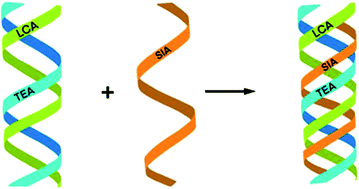
Faraday Discuss., 2021,230, 247-270
https://doi.org/10.1039/D1FD00002K
Mineral carbonation for serpentine mitigation in nickel processing: a step towards industrial carbon capture and storage
We incorporate the carbonation of ultramafic ore followed by froth-flotation to enhance nickel recovery in the beneficiation stage, instead of the traditional froth-flotation step for nickel processing.
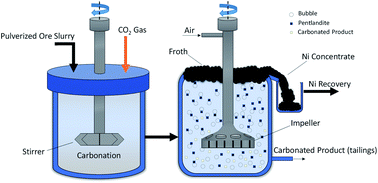
Faraday Discuss., 2021,230, 172-186
https://doi.org/10.1039/D1FD00006C
Reactive capture using metal looping: the effect of oxygen
By looping magnesium via electrolysis, capture and conversion of CO2 to higher-value products can happen simultaneously. The effect of other gases on this process, particularly oxygen, in waste CO2 streams is investigated and shown not to cause adverse effects.
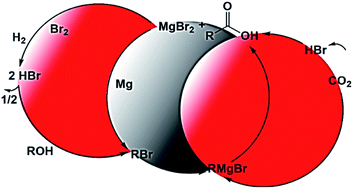
Faraday Discuss., 2021,230, 292-307
https://doi.org/10.1039/D1FD00001B
Identification of C2–C5 products from CO2 hydrogenation over PdZn/TiO2–ZSM-5 hybrid catalysts
PdZn/TiO2 combined with ZSM-5 zeolites allowed for consecutive CO2 hydrogenation to CH3OH, CH3OH dehydration to DME, and MTH/DMTH in a one-pass single bed reactor. PdZn alloys, although stable at high temperature, hydrogenate olefins, limiting MTH/DMTH chain growth.
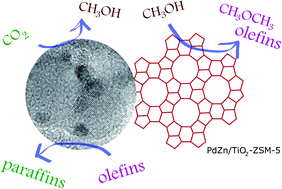
Faraday Discuss., 2021,230, 52-67
https://doi.org/10.1039/D0FD00135J
Managed pathways for CO2 mineralisation: analogy with nature and potential contribution to CCUS-led reduction targets
We examine natural and managed pathways for CO2 mineralisation. Our study indicates that managed pathways have potential to meet 60% of the UK’s CCUS-led emission reductions by mineralising 24 Mt CO2 in selected industrial wastes by 2030.
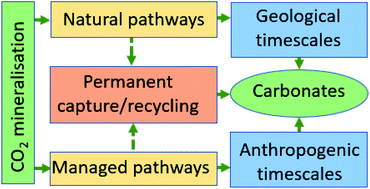
Faraday Discuss., 2021,230, 152-171
https://doi.org/10.1039/D0FD00142B
Curing time: a temporally explicit life cycle CO2 accounting of mineralization, bioenergy, and CCS in the concrete sector
CO₂-negative concrete is possible via bioenergy and CCS at cement kilns and recarbonation of concrete during and after service life. However, CO₂ uptake by biomass and concrete is gradual and CO2 negativity is reached only well after emissions occur.
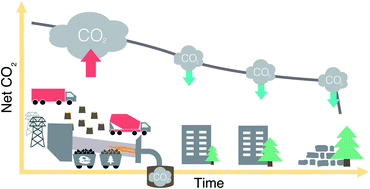
Faraday Discuss., 2021,230, 271-291
https://doi.org/10.1039/D0FD00139B
How bulk and surface properties of Ti4SiC3, V4SiC3, Nb4SiC3 and Zr4SiC3 tune reactivity: a computational study
A first principles density functional study into the bulk and surfaces properties of MAX-phase early transition metal silicon carbides points to their potential as carbon dioxide hydrogenation catalysts.
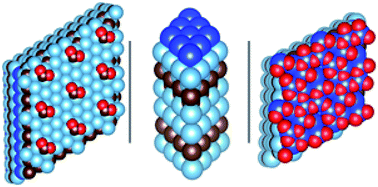
Faraday Discuss., 2021,230, 87-99
https://doi.org/10.1039/D1FD00004G
Hydrophobic thiol coatings to facilitate a triphasic interface for carbon dioxide reduction to ethylene at gas diffusion electrodes
In this work, we report the use of hydrophobic 1-octadecanethiol coatings at copper coated gas diffusion electrodes to enhance the production of ethylene.
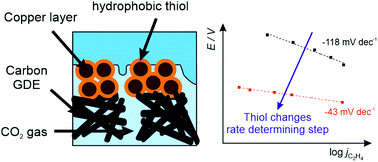
Faraday Discuss., 2021,230, 375-387
https://doi.org/10.1039/D0FD00133C
Enhanced bio-production from CO2 by microbial electrosynthesis (MES) with continuous operational mode
Continuous operational mode increased systems efficiency compared to fed-batch mode. Hydraulic retention time (HRT) affected the production pattern. Short and long HRT increased acetate production rate and products diversity, respectively.
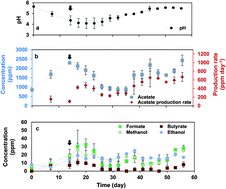
Faraday Discuss., 2021,230, 344-359
https://doi.org/10.1039/D0FD00132E
Understanding catalytic CO2 and CO conversion into methanol using computational fluid dynamics
To investigate the kinetics of methanol synthesis from a mixture of CO2/CO/H2, a computational fluid dynamics model has been developed, incorporating two distinct kinetic models, one which includes CO hydrogenation and one which does not.
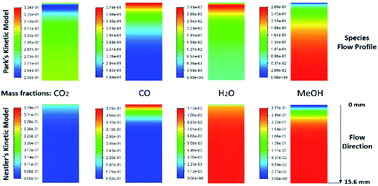
Faraday Discuss., 2021,230, 100-123
https://doi.org/10.1039/D0FD00136H
Renewable carbon feedstock for polymers: environmental benefits from synergistic use of biomass and CO2
In this study, we explore synergetic effects between biomass and CO2 utilization to reduce both GHG emissions and renewable resource use.
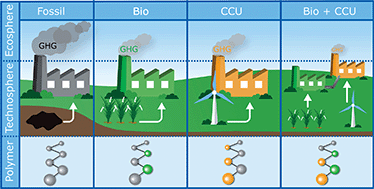
Faraday Discuss., 2021,230, 227-246
https://doi.org/10.1039/D0FD00134A
Integration of aprotic CO2 reduction to oxalate at a Pb catalyst into a GDE flow cell configuration
We report the application of gas diffusion electrodes and catalyst deactivation processes in aprotic CO2 reduction flow cells.
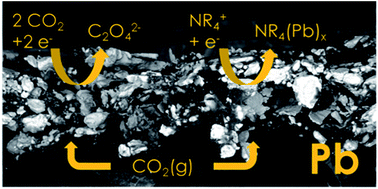
Faraday Discuss., 2021,230, 360-374
https://doi.org/10.1039/D0FD00141D
The role of surface oxidation and Fe–Ni synergy in Fe–Ni–S catalysts for CO2 hydrogenation
A partially oxidised Fe–Ni–S catalyst efficiently converts carbon dioxide and hydrogen into formate species under liquid phase alkaline conditions.
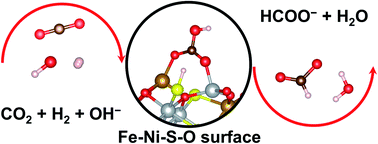
Faraday Discuss., 2021,230, 30-51
https://doi.org/10.1039/D0FD00137F
Electrochemical carbon dioxide reduction in ionic liquids at high pressure
Moderate to high pressures of carbon dioxide, relevant to an integrated capture and utilisation system, achieve greatly increased current densities for CO production.
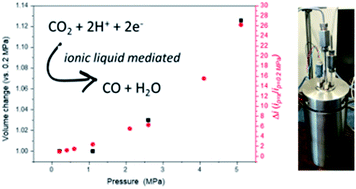
Faraday Discuss., 2021,230, 331-343
https://doi.org/10.1039/D0FD00140F
Conversion of CO2 and small alkanes to platform chemicals over Mo2C-based catalysts
Evaluating the effect of synthesis technique and metal oxide support material on the catalytic performance of Mo2C in the CO2 assisted oxidative dehydrogenation of C2H6.
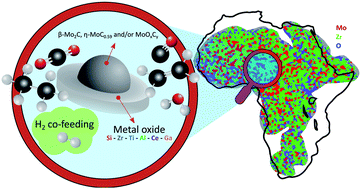
Faraday Discuss., 2021,230, 68-86
https://doi.org/10.1039/D0FD00138D
Emerging technologies: general discussion
Faraday Discuss., 2021,230, 388-412
https://doi.org/10.1039/D1FD90048J
Thermal catalytic conversion: general discussion
Faraday Discuss., 2021,230, 124-151
https://doi.org/10.1039/D1FD90045E
Accelerated mineralisation: general discussion
Faraday Discuss., 2021,230, 213-226
https://doi.org/10.1039/D1FD90046C
Life cycle and upscaling: general discussion
Faraday Discuss., 2021,230, 308-330
https://doi.org/10.1039/D1FD90047A
About this collection
We are delighted to share with you a selection of the papers associated with a Faraday Discussion on Carbon dioxide utilisation. More information about the related event may be found here: http://rsc.li/cdu-fd2021. Additional articles will be added to the collection as they are published. The final versions of all the articles presented and a record of the discussions will be published after the event.
Carbon dioxide (CO2) utilisation is an important part of ongoing activities to reduce greenhouse gas emissions in which CO2 is converted to commercially viable products, such as chemicals, polymers, building materials and fuels. Once activated it can be transformed into a valuable resource for chemical feedstocks, intermediates and value-added products.
Since the 2015 Faraday Discussion on CO2 utilisation, there has been a rapid rise in research output globally, together with increased commercialisation. This interdisciplinary collection seeks to collate the developments made across science and engineering, with a view to seeing how further advancements can be made.
The topics covered include: thermal catalytic conversion, accelerated mineralisation, life cycle and upscaling and emerging technologies